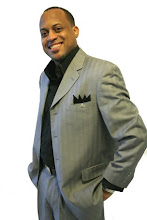
Many Americans associate German bier (beer) with Octoberfest and Munich, however many outstanding brews can be found throughout the year in different locations in this great beer drinking country.
Bamberg, is situated in the heart of Franconia, a region in northern Bavaria. The ancient city is known for its smoked Rauchbier. The most famous is Schlenkerla's Aecht Schlenkerla Rauchbier from the Heller brewery; it can be enjoyed at the Schlenkerla tavern on the Dominikaner Strasse in the Old Town.
Bamberg is home to eight breweries, Brauerei Fässla, Brauerei Greifenklau, Brauerei Heller-Trum (Schlenkerla), Brauerei Kaiserdom, Keesmann Bräu, Klosterbräu, Mahrs Bräu and Brauerei Spezial, and one brewpub, Ambräusianum, an unusually high number for a city of 70,000.

Here the standard German draught Export or Pils is frequently replaced by one or more of the traditional beers produced by local brewers:
Rauchbier (smoke beer), is a speciality of the Bamberg area, its characteristic taste is achieved by kilning the malt over a beechwood fire. I
found it very smooth and pleasant tasting.
Vollbier, can vary from light gold to almost black in color. Malty with a dry finish, it bears no resemblance to mass-produced lagers found elsewhere.
Lagerbier or Kellerbier, often brewed as an alternative to vollbier. It is unfiltered and is often dispensed straight from the barrel in Franconia’s beergardens. It is less malty and more hoppy than Vollbier.

Bockbier is a seasonal beer, similar to Vollbier, but significantly stronger. The Bamberg Bockbiers appear around Mid-October and lasts until Christmas.
Weissbier/Weizenbier (wheat beer), from Southern Bavaria is finding its way into the portfolios of many breweries in Franconia. Top-fermented, it's usually available in bottles rather than on draught, unfiltered and sedimented.
Schwarzbier (Black beer). Bamberg always had its own “little black beer” in Klosterbräu’s Schwärzla, but "black" beer is becoming popular nationally and others are now following the style. The darkest malts are used but the beer is dark brown rather than black!
The local brews are of the bottom-fermenting, lager type and are filtered at the brewery and sent out ready to serve. A variety of dispense systems is used, but it is often possible to find beer dispensed straight from the barrel, particularly at the beergardens.
You’ll be surprised to learn that Germans are drinking less beer. Beer consumption per capita actually fell by a third during the last quarter century. According to the European Beer Guide, the average German beer consumption per capita in 1985 was 153 liters for every man, woman, and child. In 2010, the average German drank around 100 liters of beer. Perhaps its the great German wine, but that’s another story.
The Franconian Brewery Museum was established by a group of professional brewers
in 1984 "out of love for the brewing tradition". It occupies the renovated historical vaults of the former Benedictine Abbey on the Michaelsberg in Bamberg, where brewing was taking place as early as 1122. Besides historical equipment acquired from local breweries, maltings and equipment manufacturers, there are displays covering the malting and brewing processes. View
Bamberg extends over seven hills, each crowned by a beautiful church. This has led to Bamberg being called the "Franconian Rome." However, a running joke among Bamberg's tour guides is to refer to Rome instead as the "Italian Bamberg".
Learn more at http://www.germany-tourism.de/ and www.bamberg.de/english.
James Weaver
Golfwiz Blog
Senior Travel Writer


No comments:
Post a Comment